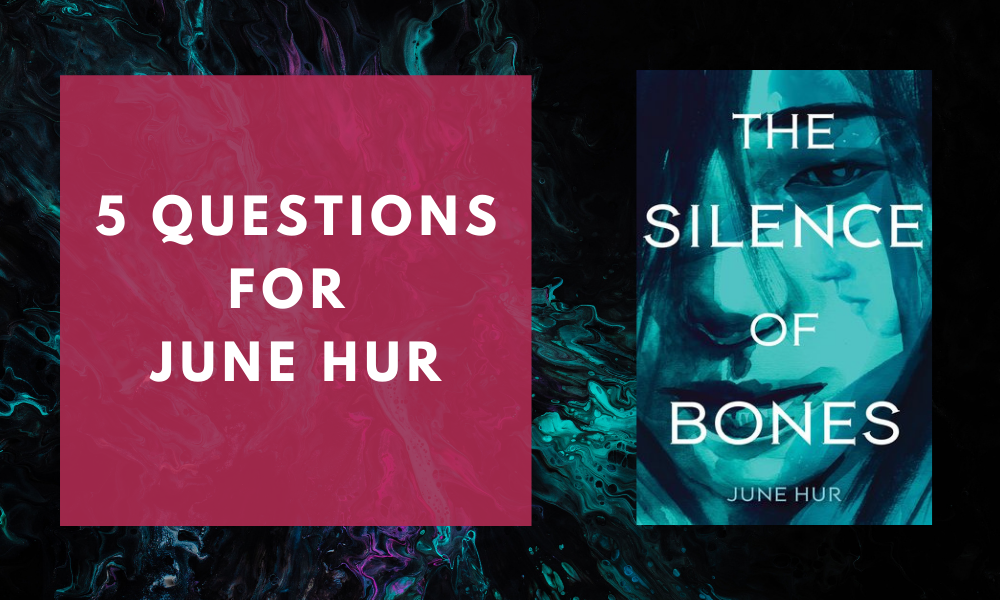
JUNE HUR (“Hur” as in “her”) was born in South Korea and raised in Canada, except for the time when she moved back to Korea and attended high school there. She studied History and Literature at the University of Toronto. Most of her work is inspired by her journey through life as an individual, a dreamer, and a Christian, with all its confusions, doubts, absurdities, and magnificence. June is the author of The Silence of Bones and The Forest of Stolen Girls, and currently lives in Toronto with her husband and daughter.
Her debut novel THE SILENCE OF BONES (Feiwel & Friends/Macmillan) is a murder mystery set in Joseon Dynasty Korea (early 1800s), and also a coming-of-age tale about a girl searching for home. It was recently selected by the American Booksellers Association as one of the top debuts of Winter/Spring 2020 and was also honored as a Junior Library Guild Selection. She is represented by Amy Bishop of Dystel, Goderich & Bourret LLC.
.
Voyage: What was the inspiration behind your novel, The Silence of Bones? What made you want to tell this story?
June Hur: The inspiration for the novel first began with my interest in the Confucian-based moralistic naewoebŏp (a law that prohibited free contact between men and women) that dominated Joseon Korea. It resulted in intense gender segregation, and while researching further into this, I came across the group of women called “damo.” I’d heard of these female police officers before, thanks to a K-Drama called “Damo,” but I’d had no idea they were actual historical figures. These women were servants who worked for the police bureau, and they were in charge of female victims, culprits, and corpses.
Damos were apparently the first female police force to ever have actual arresting power in all of world history. But this damo position wasn’t formed because women were respected. The reason for the existence of damos was rooted in gender segregation.
Damos were needed in the police bureau because of the strict Confucian rule that forbids contact between men with women. So basically, male officers had limited access with women in general, which made investigating nearly impossible for them. That’s why they needed these damo women to do the work they couldn’t do.
But despite the deeply patriarchal reason for the existence of “damo,” these women were able to subvert their role and prove how capable they were. I was so intrigued by damos that it inspired the bulk of my novel, and that’s why I made the heroine of THE SILENCE OF BONES a sixteen-year-old damo.
.
V: When you write your stories, what is the one thing you hope readers will take away?
JH: My hope is that they’ll feel fascinated by the complexity, depth, and grandeur of Joseon Dynasty Korea. I also hope that those who are homesick and lonely like my heroine, Seol, will feel less alone.
.
V: What was the hardest scene of The Silence of Bones to write?
JH: The hardest scene to write was the ending. I usually have a strong sense of how to end a story, but with this book, I wrote the story without quite knowing how to conclude Seol’s journey.
.
V: If you could tell your younger writer self anything, what would it be?
JH: When I was younger, my life revolved around trying to get published. If I could, I would go back in time to tell my younger self: Don’t put your life on hold for the sake of getting published. Don’t hold so tightly onto your dream of publication that you neglect your relationships with others and your mental/physical health. Do be kind to yourself. Do have hobbies and goals outside of writing. Life will only get busier once you get published, and there will always be a new milestone to achieve, so it’s very important to learn how to balance work/life from early on.
.
V: What are your writing must-haves?
JH: Coffee or a glass of wine, and my noise-canceling headphones.
